Can breathing trainer device WellO2 improve my respiratory muscle strength?
Is there a scientific argument for respiratory muscle training? All these questions will be answered in this blog post.
You can use my *referral link with code ILMO50 to get -50 euros off from the WellO2 order.
Table of Contents
1. Scientific literature on respiratory muscle training
Respiratory muscle training (RMT) can be defined as a way to improve the function of the respiratory muscles through specific exercises. RMT can be inspiratory muscle training, expiratory muscle training, or the combination of those [1]
RMT use cases can be simplified into two categories:
1. RMT is be used in different medical conditions to improve patients’ performance
2. RMT is used to improve athletic performance
There are many different devices in the market for the RMT, but the basic idea is the same; breathing against resistance. [2]
We can see that in the past twenty years, scientific interest in RMT has increased significantly [3]:

In the following graph, we can see a clear drop in respiratory muscle performance as we age:
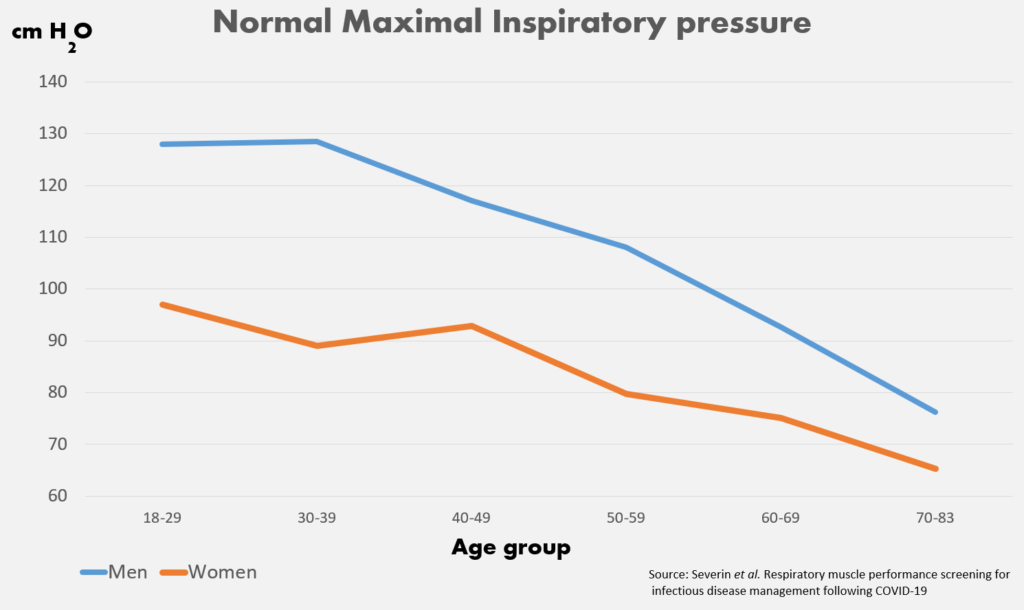
If you want to live a long, happy life, lung function is something that you should focus on as it may predict how long you will live [4].
VO2max study showed a five-fold difference between mortality over a decade in the low fitness group compared to the elite [5].
RMT Meta-analyses
In the hierarchy of scientific evidence, meta-analyses are at the top. A literature search revealed six relevant meta-analyses regarding RMT:
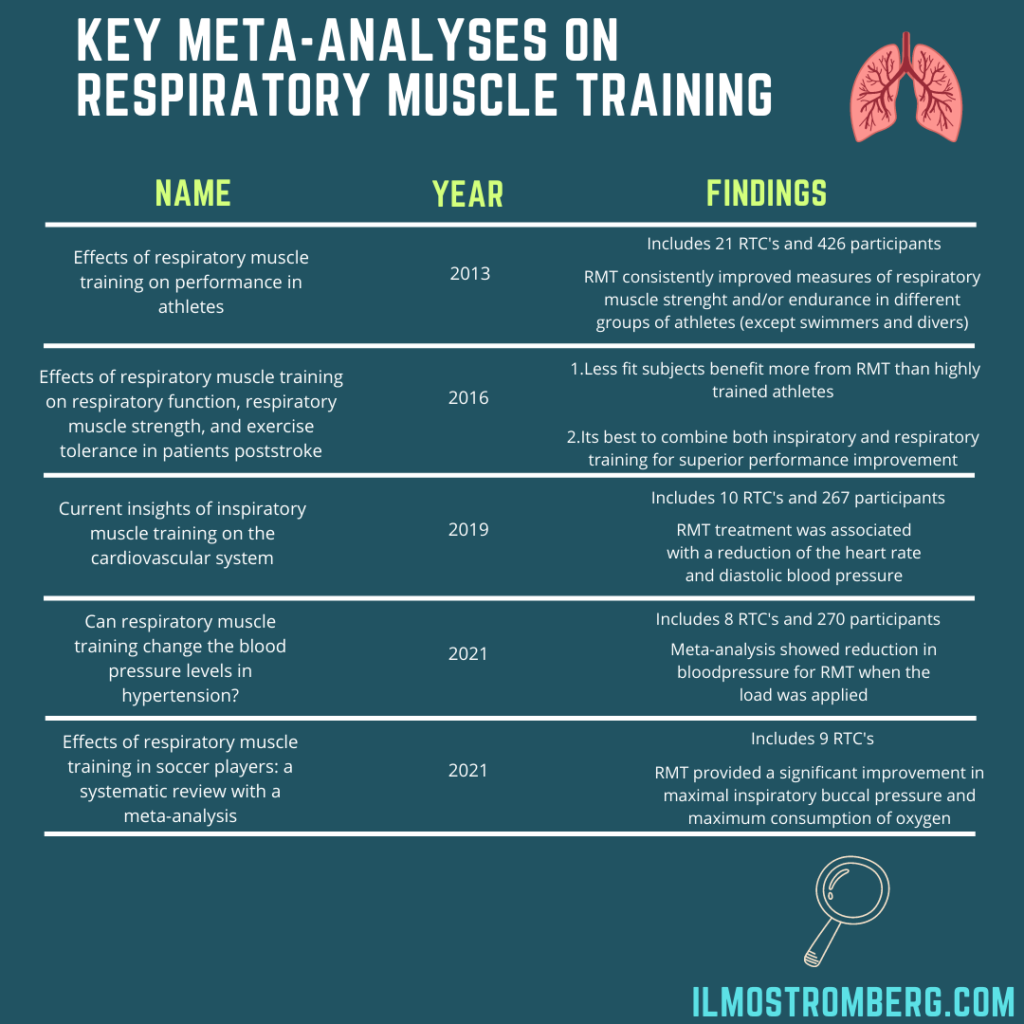
Interesting single studies
If you follow my content, you know I love heart rate variability (HRV) as a health metric. It was fascinating to read a study where RMT improved HRV in older women (small study) [6].
We are all individuals, so RMT should be tailored based on individuals’ needs and goals [7].
A study conducted with the WellO2 showed that it could improve voice quality (suitable for public speakers or singers example) [8].
RMT also has benefits in improving patients’ performance in different medical conditions like surviving COVID-19, heart failure, COPD, and stroke [9] [10] [11] [12].
Conclusion on scientific studies
All the meta-analyses showed the benefits of RMT in various metrics. For maximum benefits, it’s important to use resistance/load and combine both inspiratory and expiratory training.
There can be other benefits of RMT that need more research, like HRV improvements.
Scientific literature laid a good foundation for RMT practices; now, it’s time to look at the WellO2 device and my RMT experiment.
2. WellO2 as company & breathing device
WellO2 is a Finnish-based company offering drug-free breathing devices. Unlike other breathing devices, WellO2 combines steam breathing and resistance training.

Product: | WellO2 |
Brand: | WellO2 |
Key milestones: | Founded 2000 WellO2 product launch 2016 Over 50 000 devices sold in 2021 |
Website: | |
Best for: | Breathing problems Symptoms from air impurities Elderly for supporting day-to-day life Athletes and performance Singers and voice care Sleeping and calming down |
Price: | 179€ (around 18o$) with my referral code |
Resistance levels: | 0 / 1 / 2 / 3 |
Training programs: |
WellO2 is easy to use; you add clean water inside WellO2 between MIN and MAX fill level marks. Then you select the optimal water temperature for your exercise by pushing one of the buttons (3 different levels). It takes under 2 minutes WellO2 to heat the water; after that, you can start breathing exercises.

Official WellO2 instructions can be found here.
3. WellO2 experiment design
The big two questions are:
To answer these questions, we need to define respiratory muscle training program and performance metrics to measure before and after.
The respiratory muscle training program
I will follow the official WellO2 training regimen that combines maximal breathing power and endurance training.
A typical week will look like this:
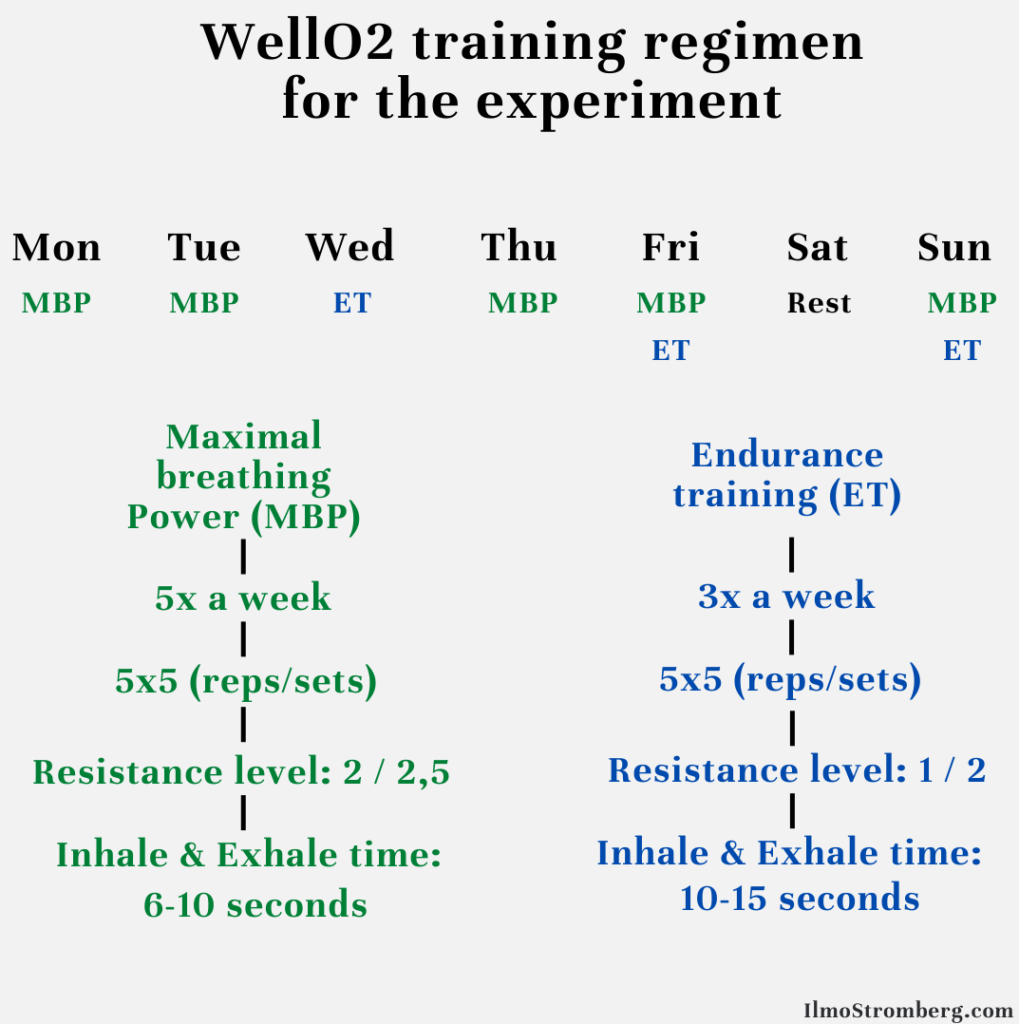
I will follow this training program for six weeks (one of those weeks is a rest week without training).
Later in the experiment, I will use WellO2 before bed for relaxation to investigate possible effects on heart rate variability (HRV).
Performance metrics
The following performance metrics will be measured before and after the experiment:
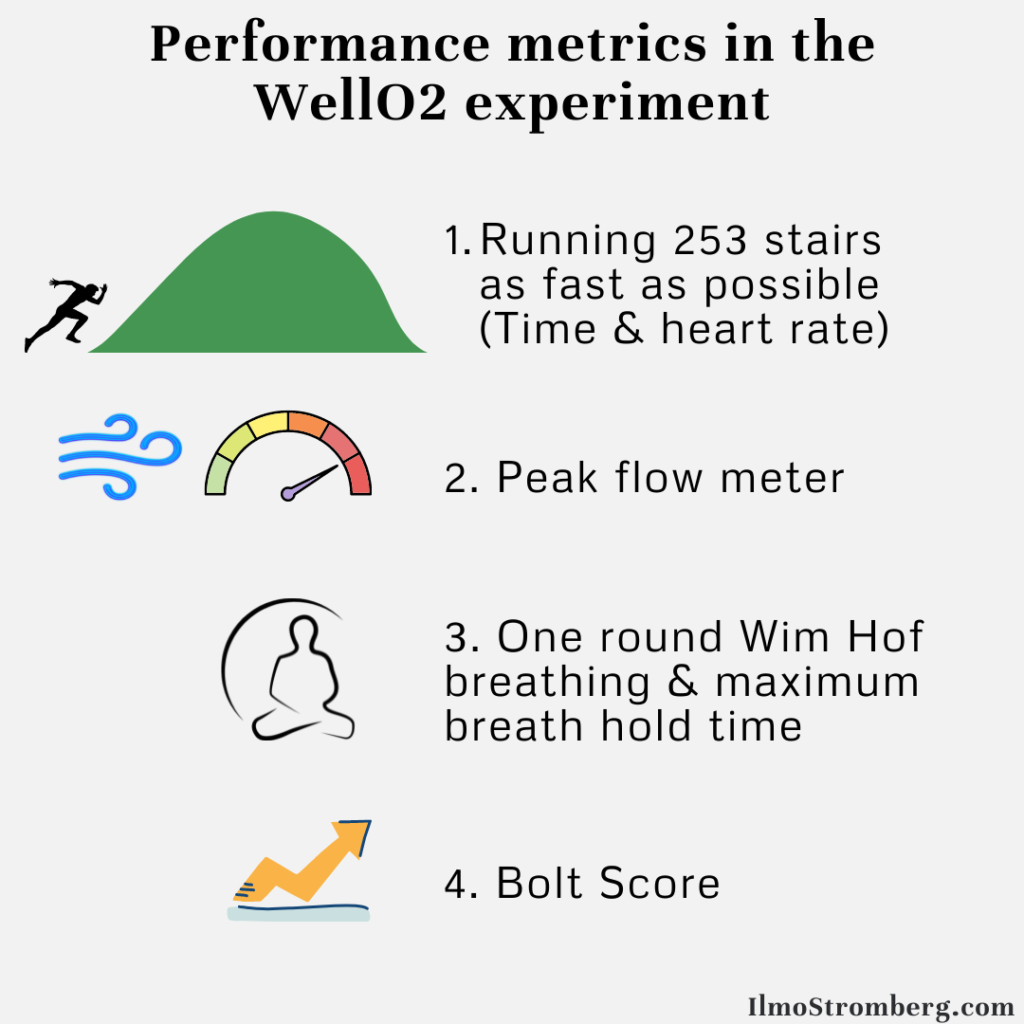
None of the metric activities will be performed during the experiment.
The peak flow meter measures the maximum air flow exhaled.
Patrick McKeown popularizes the bolt score (body oxygen level test) as an accurate and valuable tool to determine relative breathing volume. Instructions for bolt score measurement can be found here.
4. WellO2 experiment results
As six weeks is now over, it’s time to look at the results.
Let’s start with the performance metrics:
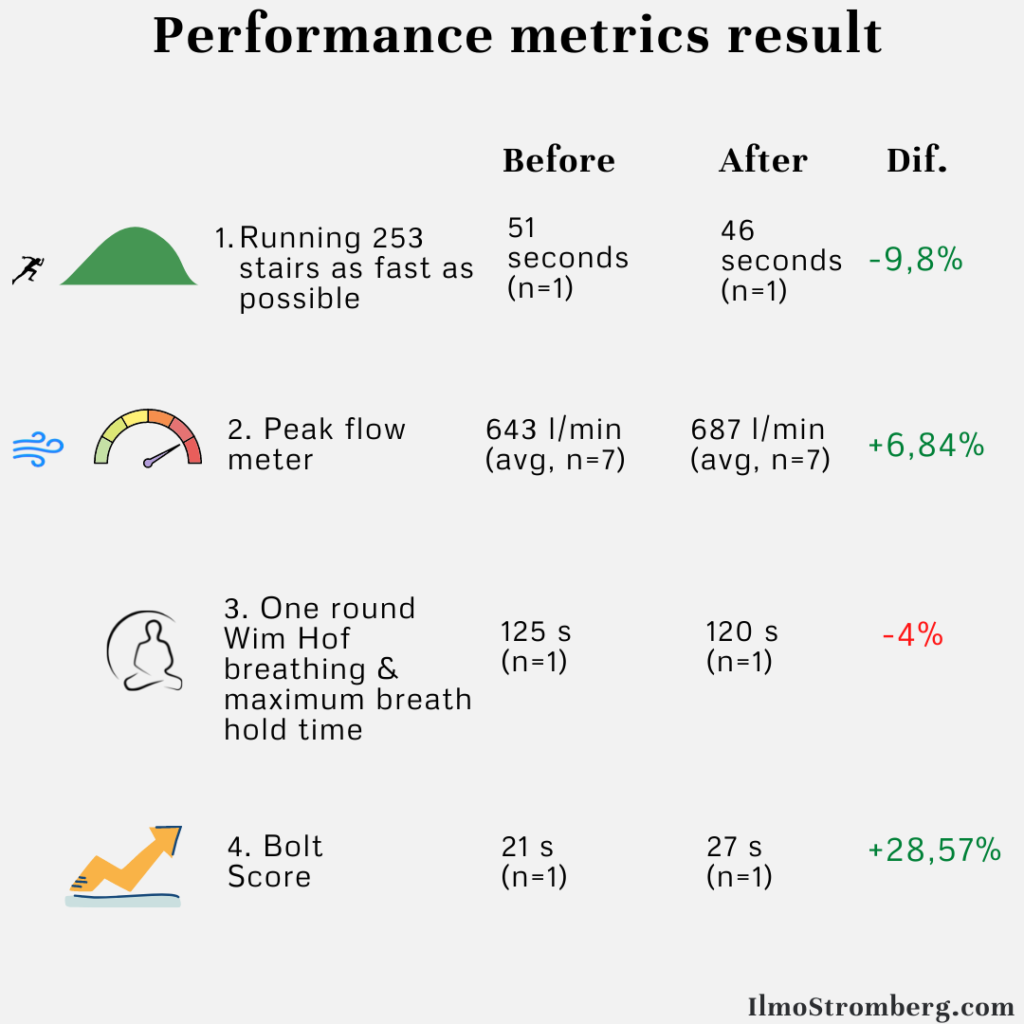
Overall we can see improvement in 3/4 of the metrics.
There was a 5-second improvement with stair running. I noticed that I didn’t feel as tired in the last 50 stairs, which most likely helped me to run it faster.
We saw an almost 7% increase in peak expiratory flow with the peak flow meter, most likely due to maximal breathing power training with WellO2. The data quality is best in this metric as there were seven measurements before and after.
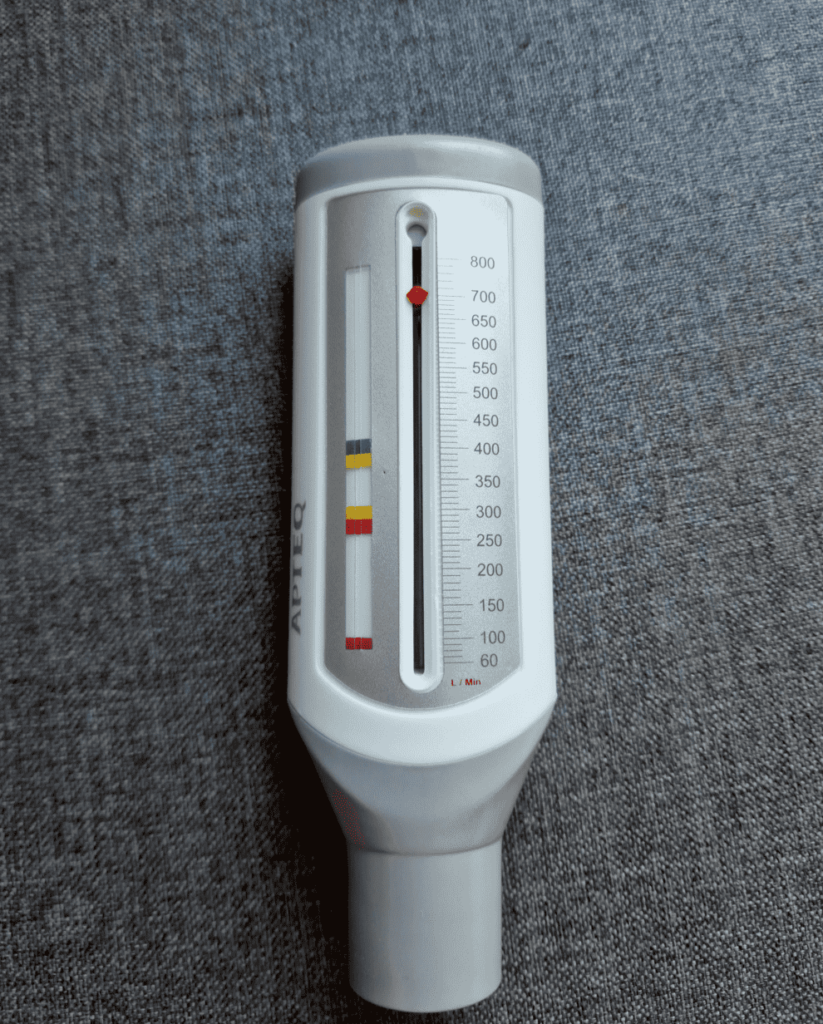
Interestingly, a 7% increase places me from normal values for my age and height group at the top of the chart (the maximum number in the chart was 680, and my average value was 687) [13].
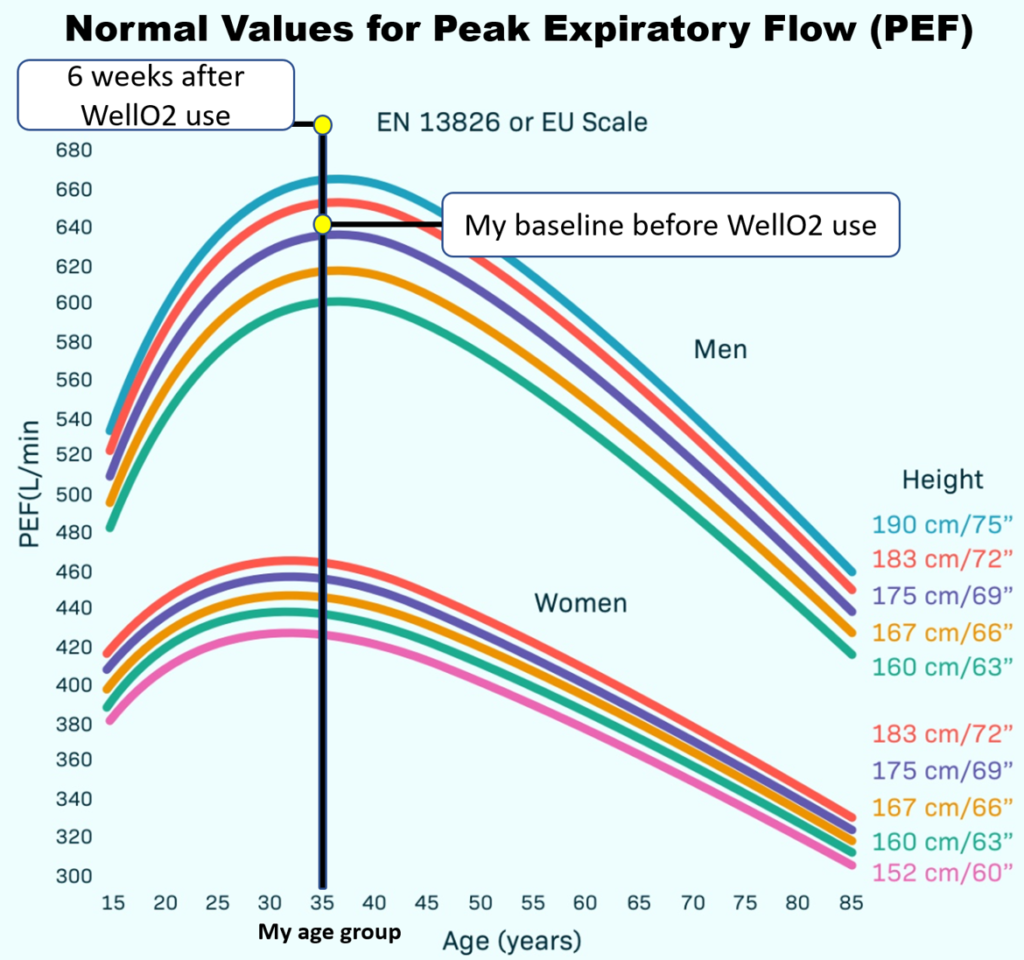
One might ask: “that’s a nice increase, but what does it mean in terms of performance or longevity”?
Peak expiratory flow (PEF) is more researched for lung diseases; abnormally low values can significantly increase the risk of death [14]. One interesting study concluded that respiratory mortality was strongly and inversely associated with PEF, based on a study population of 170 000 men [15].
PEF is related positively to bone density health, with more significant influence than hand grip strength, according to a study published in 2018 [16].
One study showed a strong association between PEF and the development of carotid atherosclerotic plagues [17]. Lastly, 100 liters/minute decrease in peak flow rate has a 1.16 relative risk of total mortality, according to Cook et al. [18].
As for performance, the 16-week aerobic exercise plan improved PEF by 17% compared control group [19]
Few studies also note that elite athletes have higher PEF than non-athletic healthy counterparts [20][21].
If physical exercise improves PEF, can RMT-induced PEF improvement enhance athletic performance, or is there a better metric to follow along with RMT training? For this, I would like to see more scientific studies.
Let’s go back to the last two performance metric results:
Maximum breath hold after one Wim Hof round didn’t increase. I have not read a scientific study where RMT has experimented with maximum breath hold, so to my knowledge, this meter was not backed by science, but it was still interesting to include in the scope. Also, just one measurement before and after is vulnerable to variation.
Bolt score showed a significant 28% increase after the experiment, but like in Wim Hof breath hold, there was only one measurement before and after.
Overall the performance metrics support the hypothesis that RMT and WellO2 can be beneficial for lung function and performance.
Relaxing breathing with WellO2
What about 5 minutes relaxing breathing session with WellO2, and how would that compare against resonance breathing (5 seconds inhale, 5 seconds exhale)? Relaxing breathing is done with 0-level resistance (easiest).
It’s relevant to mention that with WellO2, I’m breathing through the mouth but in resonance breathing through the nose.
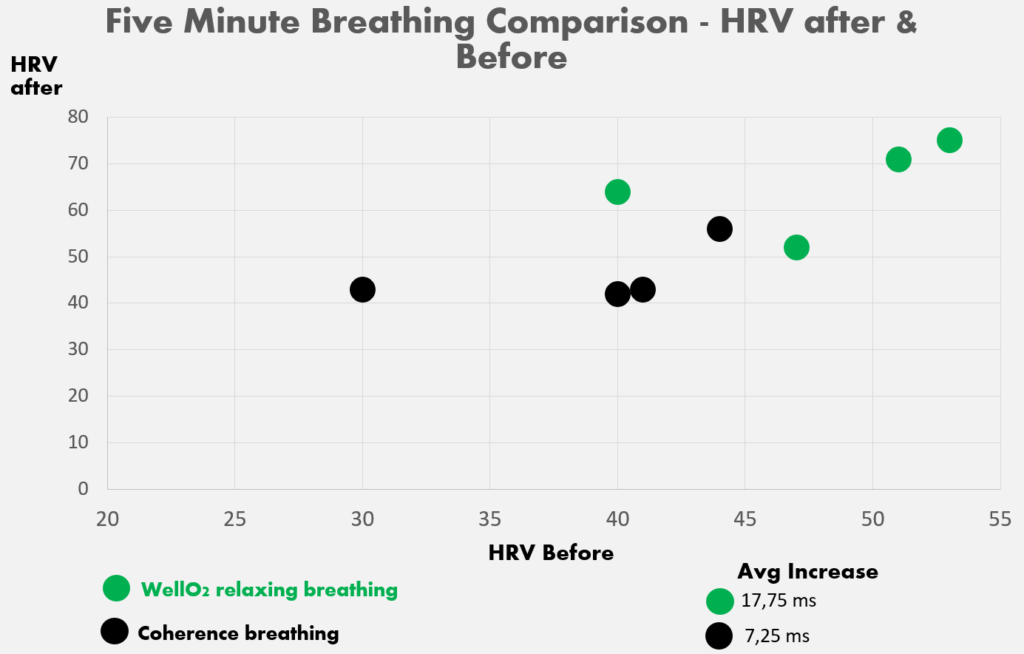
The sample size is small as I got the idea to use Lief (ECG level HRV device) in the latter part of the experiment.
It seems that 5-minute relaxing breathing with WellO2 increases HRV significantly. I was surprised by the results for two reasons:
1. Coherence breathing feels easier and more peaceful during breathing (as I just nose breath)
2. I monitored my HRV in real time and saw a significant increase already in 1-2 minutes with WellO2
Even though Coherence breathing feels more peaceful during the exercise, there’s a calm, tranquil feeling after the WellO2 breathing session is over.
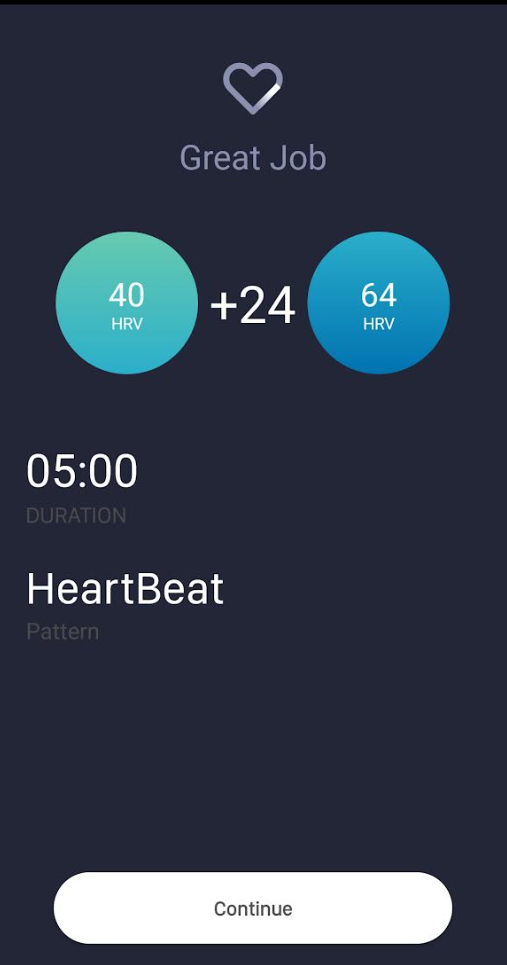
The screenshot above shows one relaxing 5-minute session with WellO2.
2020 I did a breathing experiment with different styles of breathing. There I concluded that my average HRV was 65 during resonance breathing. The session length was 20 minutes.
My average end HRV with WellO2 was 65,5 ms in this experiment, achieved only in 5 minutes. End HRV is different than avg HRV, but it seems that WellO2 is an excellent tool for fast relaxation.
As this experiment was done just before bed, an interesting follow-up question is:
Not only was it visible, but there was a significant difference:

We might have an undervalued relaxing use case for WellO2 here. This means I recovered better at night when I used WellO2 before bed. I would like to see an actual scientific study about this with WellO2!
I will continue my experiment with this and especially use WellO2 before bed when I feel my sympathetic nervous system is in overdrive.
5. Key takeaways
My goal is to live over 100 years old. In longevity, it’s essential to have healthy, strong lungs. A few months ago, I wasn’t aware of the respiratory muscle training concept, nor how many scientific studies show its benefits.
My performance metrics show that WellO2 is an excellent device for improving respiratory muscle strength. I will keep doing respiratory muscle training, both for athletic performance and longevity (similar training regiment like in the experiment but gradually increase resistance). Parasympathetic activation before bed with WellO2 seems to be a valuable tool to enhance recovery and better sleep.
I have also used the Airofit RMT device before; even though it’s smaller than WellO2, I prefer WellO2 as steam makes the training more comfortable. With Airofit or other similar devices, you get dry mouth quickly.
As proper scientific study would state, there’s a conflict of interest in the experiment as I’m also offering a referral link to get WellO2. That said, I can honestly recommend WellO2, but it also requires daily use and discipline to see the benefits. If you buy WellO2, I suggest defining your goals, customizing the suitable training plan, and measuring metrics before and after.
I plan to do a new review of WellO2 when they publish a mouthpiece that measures users breathing performance (the mouthpiece is applied to the current WellO2 device). This will bring a new dimension to the WellO2 experiment as breathing performance metrics are already in the WellO2 app.
You can use my *referral link with code ILMO50 to get -50 euros off from the WellO2 order.

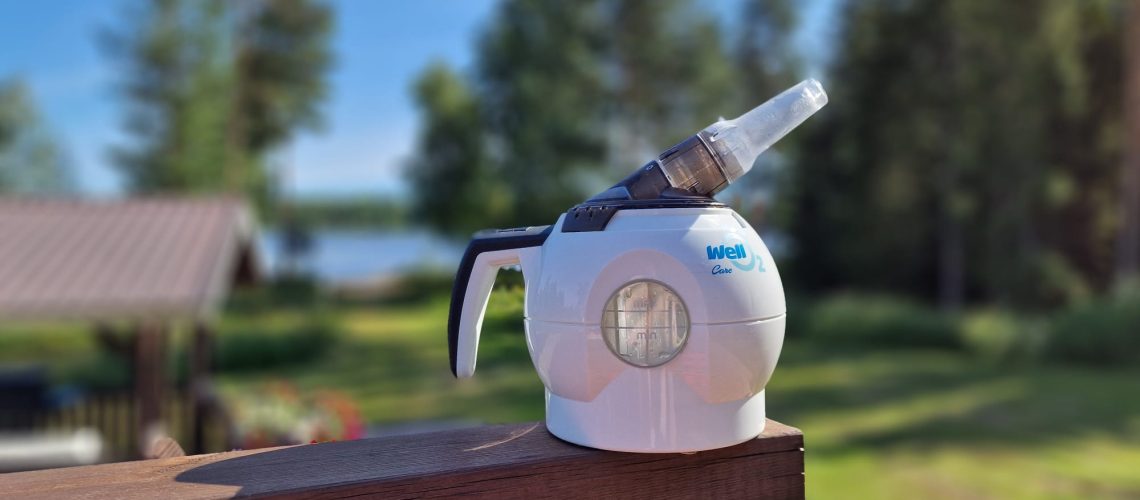
This Post Has 4 Comments
Thanks. What is the mechanic of relaxing breathing with WellO2? What’s the difference from Coherence breathing?
Hey Oleg, good to hear from you. I’m not sure what is the mechanism behind HRV rise; is it warm steam that you breathe or just the actual (mouth) breathing with WellO2 that increases HRV? I’m doing it with zero resistance so there’s no load.
I’m doing longer exhales and inhales with WellO2 than in Coherence breathing. I’m planning to start a youtube channel so this is something that I want to demonstrate in the video real-time.
As of 8/18/22, 8:27am PDT, the link you provide here for wello2 takes me to gutguide, FYI.
Thank you for noticing that, I’ll fix it asap